The Orphan Homes of Scotland
In September 1878, the first building of what was to become known as the Orphan Homes of Scotland was officially opened. In less than 20 years there were over 50 cottages, together with a Church, a dairy, a poultry farm, workshops and a school, all catering for some 900 children. Orphaned and destitute children came to ‘the children’s city’ from all over Scotland and beyond. Many of them were migrated to Canada, particularly from two of the cottages, Cessnock and Mitzpah.
Cottages were run by a house mother and house father and many accommodated over 30 children. Boys and girls were separated and often siblings sent to Canada did not meet up again until later life, if at all.
William Quarrier, despite being born into penury in Greenock, had made a large amount of money in the shoe trade. He started his work with children in Glasgow by setting up parcel and shoeblack brigades. As well as promoting the value of hard work, his Christian faith underpinned everything that he achieved. Although much changed in its functions, Quarriers Village remains in appearance today much as it was at the end of the 19th Century.
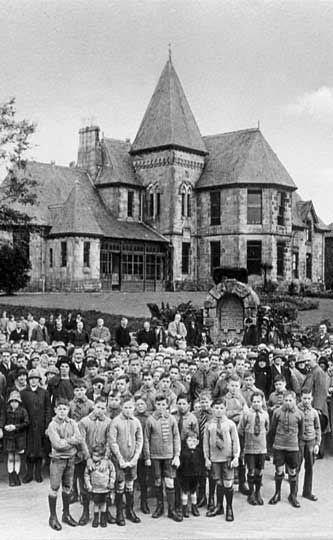
The Port
Nearly all of the children sent to Canada by William Quarrier travelled on a ship belonging to the Allen Line. The company was formed in 1852 by Alexander Allan and lasted until 1909 when it was taken over by the Canadian Pacific. The red, white and black funnels of the Allen Line were a familiar sight in the port of Glasgow.
Some of the Quarriers children sailing to Canada would travel to Greenock and be ferried out to the liners by small boats. Whether they embarked at Glasgow or at Greenock the children would process to the docks well clothed for the long and cold journey across the Atlantic. They were seen off from the Orphan Homes by all the other children singing Don't Forget the Orphan Homes of Scotland.
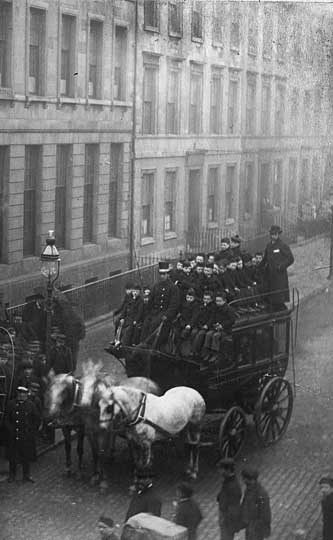
The Voyage
One of the ships that took the children from Quarriers to Canada was the SS Manitoban. On one voyage which left Glasgow in April 1881 there was a party of 56 boys from the Orphan Homes, the youngest of whom was six. In addition to the boys, there were 70 other passengers embarking at Glasgow and a further 120 joined the ship at Galway.
The crew numbered 62, the master being Angus MacNicol from Glasgow aged 38. The boys were under the care of William Quarrier’s daughter, Agnes and Miss Anna Bilbrough. In the list of occupations they are both listed as lady. The voyage lasted for 12 days and almost all of the boys were seasick. However they soon got over this and most enjoyed the journey.
On another voyage it was recorded that a typical meal consisted of Irish stew, rice dessert, coffee and bread and butter. Several of the boys apparently commented as they prepared for bed “Man a’ feel awfu’ funny!”
Various games were played on deck such as tug of war and the boys often occupied themselves by watching for whales, one small boy asking apparently “Could that whale swallow a man?”
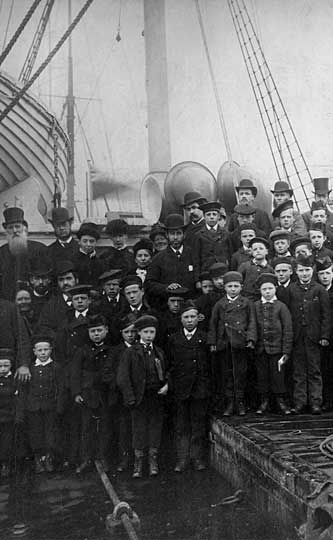
Halifax and Onwards
The majority of Quarrier’s children disembarked at Halifax, Nova Scotia. On the quayside today on Pier 21 there is a Museum commemorating the lives of all emigrants to Canada. In the Museum there is a plaque which reads:
In honour of the 100,00 British Children, aged 6 to 14, orphans and non-orphans, who between 1859 and 1948 were shipped to Canada, where most worked as domestic servants and farm labourers.
The distinguished Professor of History who wrote the text for the plaque had wished to include the fact that the children were “cheap farm labour” but was over-ruled by officialdom and feels that her message was “neutered”.
The children were taken from the port to the Receiving Homes in Ontario by train, a journey of nearly 1000 miles that took three days. In an account of the April trip in 1881 there is a description of the party enjoying seeing sleighs going through the snow and ice and giving the children an idea of what winter was like in Canada. The carriages, or cars, however were warm because of stoves burning but they were not very comfortable for sleeping. All the children were heartily glad to arrive at the Receiving Home.
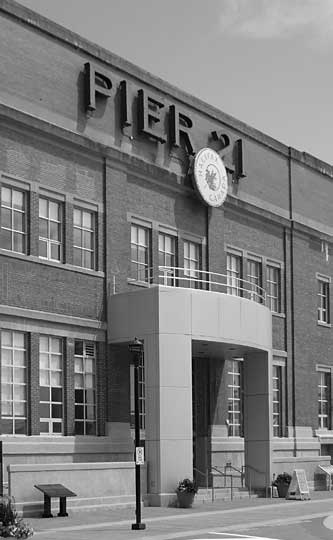
Receiving Homes and Onwards
When children were first sent from the Orphan Homes of Scotland to Canada they went to the Receiving Home called Marchmont. This had been established by Annie Macpherson in 1870 in the town of Belleville situated towards the eastern end of Lake Ontario.
By 1887 the numbers of children sent by William Quarrier had increased tenfold and he decided to open his own receiving home. The town chosen was Brockville, a hundred miles east of Belleville and on the St.Lawrence overlooking the thousand islands. Quarrier travelled to Brockville himself and with the help of the Rev. E.J. Stobo, who had taken out the first party from the Orphan Homes in 1872, discovered the house called Fairknowe which was purchased for £2000 together with 16 acres of land.
Fairknowe was a very well appointed and large house of three storeys with attics. The walls were two feet thick to withstand the winter and there were fireplaces in all the main rooms. Quarrier’s daughter Agnes Burgess and her husband, who had lived in Canada for some years took charge. The building, which still stands, was sold in 1934 and subdivided into apartments.
Fairknowe today

The Last Word
From Marchmont and Fairknowe the children spread out all over Canada. At first Quarrier tried to ensure that all children were placed within three hundred miles of the receiving homes. He also embarked on extensive tours trying to visit all the farms where his children were.
Today it is estimated that about one in ten of Canadian families have a home child in their ancestry.
The migration scheme has been debated ever since and several agencies exist now to help families trace their ancestors. Two of the most influential are Home Children Canada, which operates out of Renfrew, Ontario, and Quarriers Canadian Family which is based in Brockville, Ontario. One of the last of Quarriers children to be sent to Canada when he was 15 in 1929 wrote later:
“Canada was fortunate indeed to receive such future citizens; it was Scotland’s loss that they were sent away.”
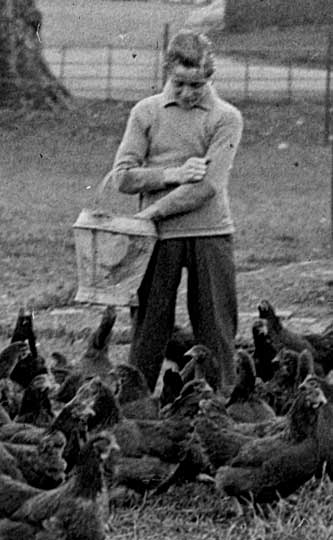
The videos on this page are extracted from Living Histories: The Quarriers by Paul Hunt. They are reproduced here with the filmmaker’s kind permission.
See credits and acknowledgements for full copyright details.